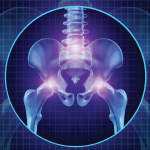 Many physicians believe patient education may be an effective treatment strategy for acute lower back pain. Such education is often complex and time consuming. A recent study found that two hours of patient education in addition to recommended first-line care did not improve pain outcomes in patients with acute low back pain. The research by Adrian C. Traeger, PhD, postdoctoral research fellow at the University of Sydney, Australia, and colleagues suggests clinical guidelines that recommend providing intensive educational support to high-risk patients with acute low back pain may be premature and such patient education should not be offered to these patients. Their findings were published online in JAMA Neurology.1
Many physicians believe patient education may be an effective treatment strategy for acute lower back pain. Such education is often complex and time consuming. A recent study found that two hours of patient education in addition to recommended first-line care did not improve pain outcomes in patients with acute low back pain. The research by Adrian C. Traeger, PhD, postdoctoral research fellow at the University of Sydney, Australia, and colleagues suggests clinical guidelines that recommend providing intensive educational support to high-risk patients with acute low back pain may be premature and such patient education should not be offered to these patients. Their findings were published online in JAMA Neurology.1
The investigators screened 618 potential participants from Sydney who had acute low back pain. They used the Predicting the Inception of Chronic Pain (PICKUP) tool to exclude patients with acute low back pain who had a lower than average risk of pain chronicity. The remaining 202 adults had a mean age of 45 (± 14.5 years) and approximately half were women. These patients had had fewer than two weeks of low back pain and experienced three previous episodes of low back pain. The researchers randomized the participants to receive either two, one-hour sessions of patient education or a placebo of professional consultation without any information or advice. The study had a retention rate above 90% at all time points: one week, three months, six months and 12 months. Although this study was the first trial of this nature to be placebo controlled, the study design did not allow clinicians to be blinded to treatment allocation.
The study’s primary endpoint was reduction of pain. At all time points, the investigators found patient education was no more effective than placebo at achieving the primary endpoint. Additionally, patient education was not more effective than placebo at reducing depressive symptoms, the incidence of chronic low back pain or global perceived change. However, researchers did note that disability was significantly lower in the intervention group compared with the placebo group at Week 1 and Month 3, but not at Months 6 or 12.
When the researchers analyzed secondary outcomes, they found the odds of having a recurrence of low back pain at 12 months were lower in the patient education group than in the placebo group (odds ratio, 0.44, 95% confidence interval [CI], 0.24–0.82). Additionally, pain interference and the odds of seeking healthcare were also lower in the patient education group at three months (pain interference, -0.8; 95% CI, -1.5 to -0.1; P=0.02; healthcare seeking: odds ratio, 0.43; 95% CI, 0.19–0.93). However, the results for these variables were not lower at six or 12 months.

